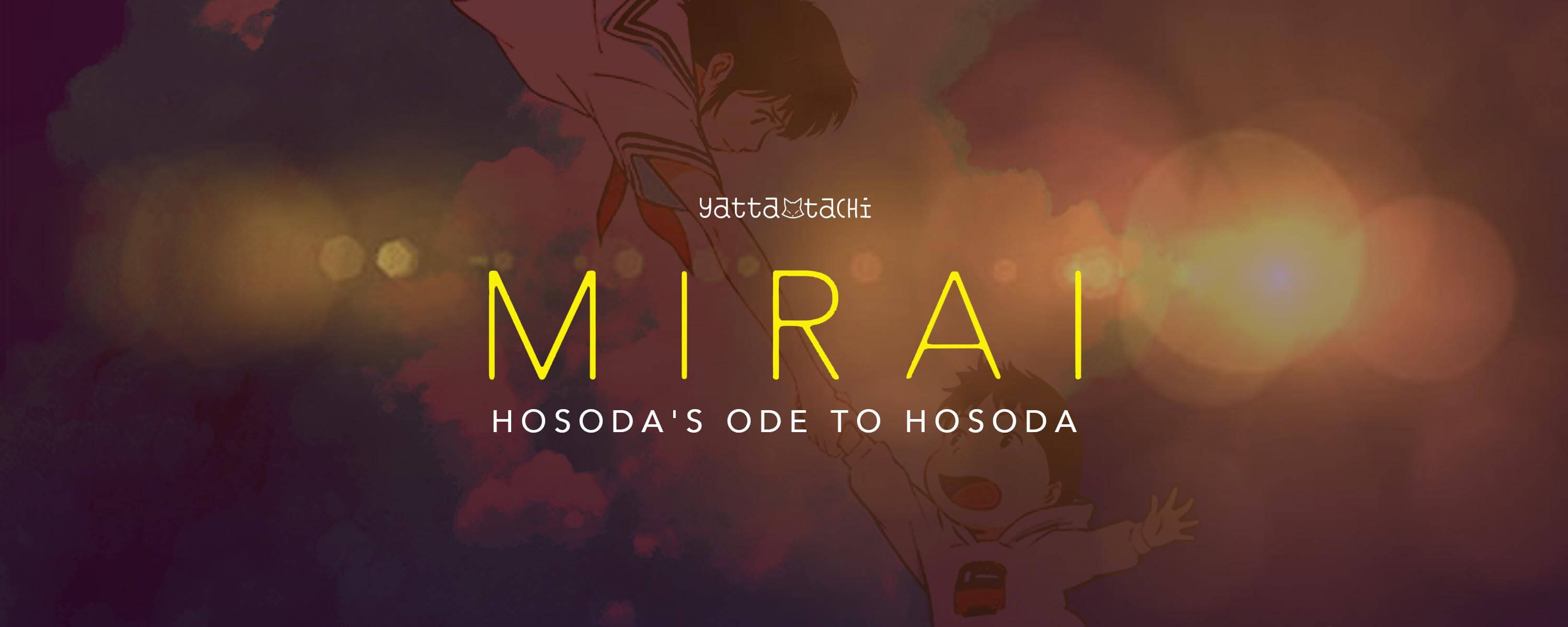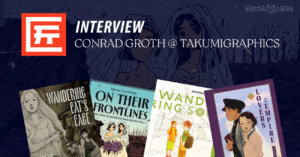From the man who brought you the masterpiece Wolf Children, and then The Boy and The Beast immediately afterward, one might wonder if Mamoru Hosoda has already made his magnum opus at his relatively young age. After all, The Boy and The Beast serviced many tropes from other family-adventure tales, and brought very little of Hosoda in them (apart from several camera movements that Hosoda has come to love, e.g. literal shots and upward zooms)
That’s what made Mirai so important for his career; to prove that he still had it in him to make stories that were unique to him. In many ways, Hosoda does seem to be speaking directly to the audience, in both answering our questions and sending a plea to his home nation. Yes, Mirai is 98 minutes of Hosoda begging Japan to have children and not let their race go extinct.
And Hosoda does this by going back to the themes and visual elements found in all of his previous films. We follow Kun, a young boy who has just become an older brother – voiced by Moka Kamishiraishi, the younger sister of Mone Kamishiraishi, who voiced Mitsuha in Makoto Shinkai’s Your Name. Kun’s little sister, Mirai, comes home as a newborn baby, meaning she requires most of the attention from their parents. This causes Kun to feel isolated from his family, as he’s no longer receiving the level of affection he did before she was born. Eventually, he becomes abusive to his baby sister and parents. This results in his parents alienating him even further.
Magic that Feels Unmagical
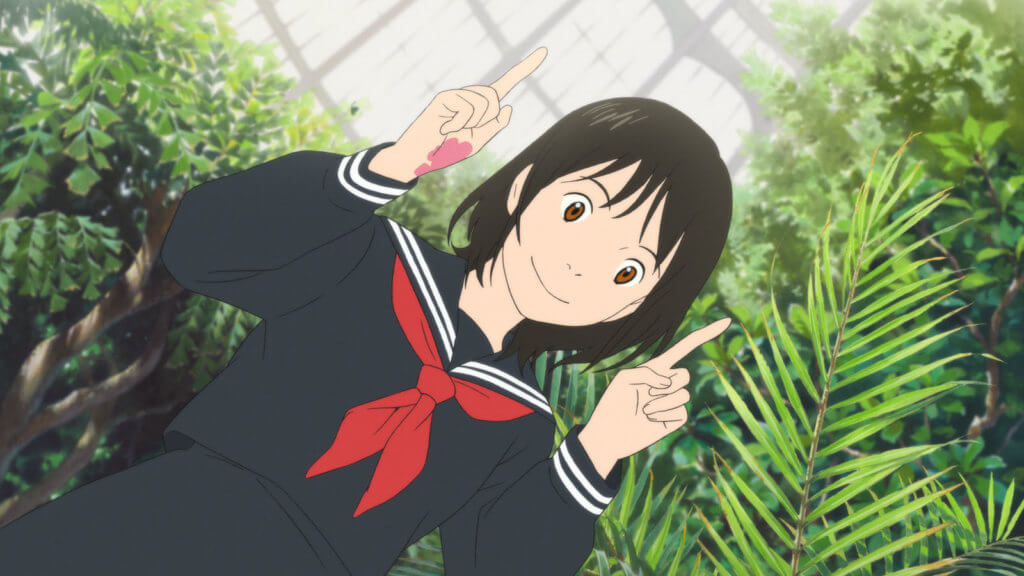
The catharsis comes from an undescribed magic that spans throughout the story, allowing Kun to move through time during various occasions inside his home. He gets the chance to witness his mother as a disobedient child when she was his age; see his grandfather, who was a veteran from World War II; and meet his little sister’s future self.
These sections are broken apart into a formulaic structure, where Kun is sent through time only when he puts his family through some sort of stress. And it happens so frequently, perhaps once every ten-to-fifteen minutes, that the film becomes no more interesting than a bland math equation.
This isn’t to say there aren’t moments where Hosoda’s magic comes into place, through his distinct comedic touches in scenes with Kun and his younger sister’s older self. However, the film’s narrative flow is so bisected from its formula that it lacks any cohesive thematic structure. After all, the film’s titular character perhaps only takes up twenty minutes of actual screen-time; Mirai’s older self appears for only about a quarter of those twenty minutes.
Hosoda Goes Back to His Roots
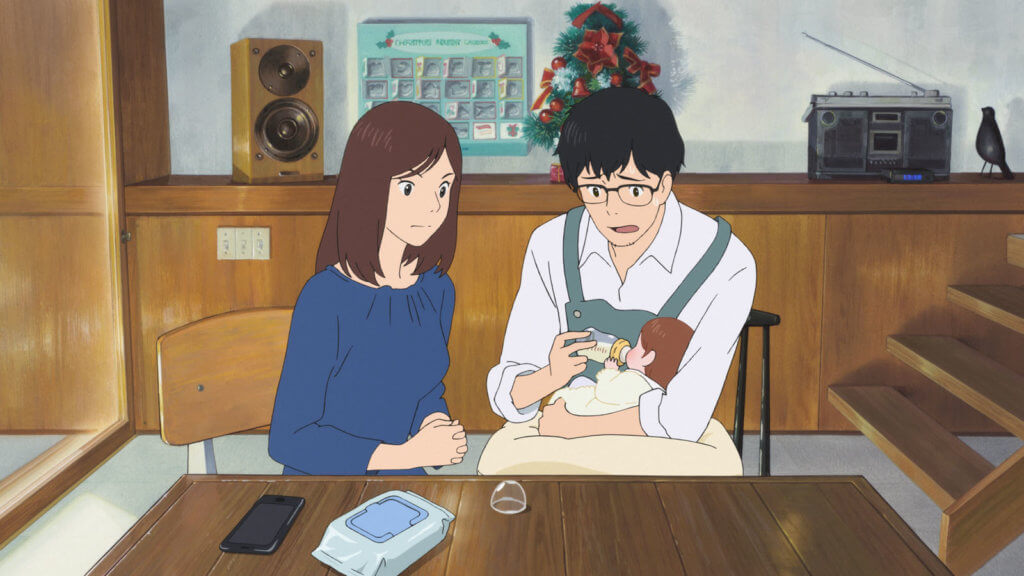
Beyond that, the film feels like it treads through too many familiar elements seen in previous Hosoda films. In some ways, this is Hosoda speaking to the audience, that he’s going back in time to his earlier films to find something fresh in them. But too many visual notes are taken from the prior filmography, that Mirai doesn’t seem to bring any new perspective from them.
Images of Kun, in a hybrid dog form, immediately point back to Wolf Children. The time traveling mechanism looks awfully similar to the dimensional planes seen in The Girl Who Leapt Through Time, Digimon: The Movie, and Summer Wars. And the first magical/time warp location that Kun finds himself in looks eerily akin to the setting in The Boy and The Beast. These images can be seen in the various trailers for the film as well, which may lead one to suspect that Mirai is a sort of film that ties together all the rest into some pseudo-cinematic universe.
This doesn’t seem to be the case, as the film itself never explicitly alludes to the other films besides the visual cues mentioned above. Instead of looking back to the past for revelation, it seems as if Hosoda is just losing ideas and is stealing from himself in an unambiguous manner. That may not be the case, but from how the film ties little of its themes together by the end, it certainly feels like it.
The Saving Graces & Other Failings
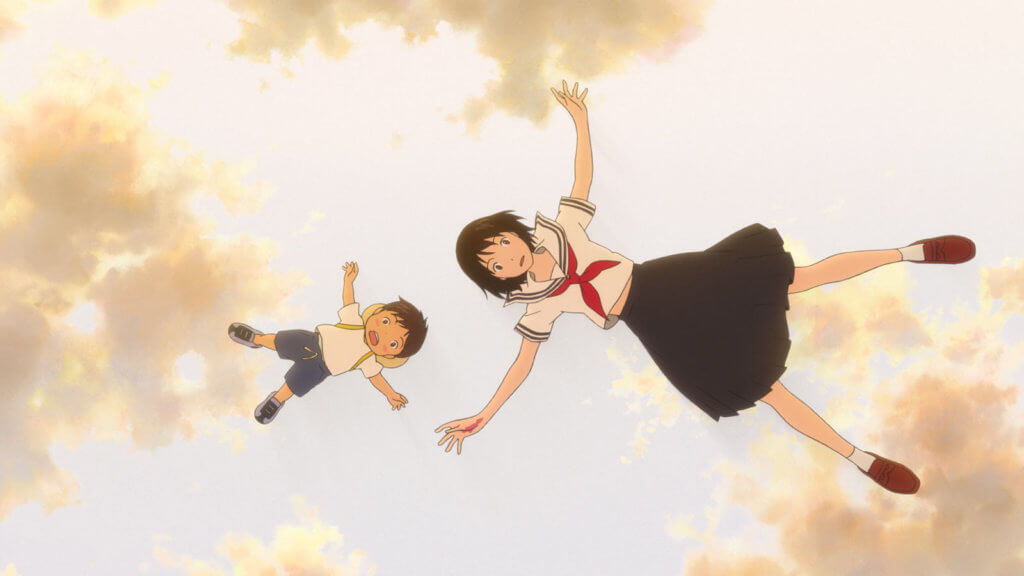
There are plenty of elements that make Mirai a worthy film to watch, however. The moments where Hosoda feels sure of what emotion he wants to convey become clear by the final stretch of the film, which is also the strongest bit as well. It begins when Kun finds himself in an ambiguous future. The world has fully globalized, with Tokyo Station making announcements in various languages (English, Arabic, Spanish, etc.). In this station, Kun becomes lost.
It’s this moment where Hosoda’s directing feels its freshest. He pans around the train station and emphasizes a horrifying train that is an amalgamation of all of Kun’s fear. In order for him to save himself, and his family, Kun must accept what he doesn’t want to: reality. It’s a powerful scene that would have worked even better if it were led up to by a consistent thematic focus.
A lot of ideas populate the film, and most of them do come across as interesting, at the very least. It shows two parents just trying to get it together, as they become overwhelmed by their children, both of whom can’t really take care of themselves yet. But that forces the adults to grow up themselves. By the end of the film, the parents become retrospective of the people they were before having kids. They come to the conclusion that their children made them better people, who saw more to the world than just their work.
It’s a theme that can basically be illustrated as Hosoda coming out of the screen and beating the Japanese public up for not having more children – though, for what it’s worth, it gives more weight to the parent’s actions throughout the story. Unlike many other family-adventure films, the parents are very present mentally, if not physically.
To add onto this, the ending also makes an attempt to tie together all of its ideas from the past 85 minutes. It throws Kun through a myriad of years, where he witnesses different vignettes of his mother, father, and grandfather when they were younger. His younger sister’s older self narrates through this moment, as she explains that every action is connected and their pain allowed them to be born. It’s delivered in a very convoluted way, and its message is hinted very little by prior set-ups.
All of this makes Mirai a weird experience. The film seems to subvert expectations, but not intentionally so. For much of its runtime, it feels lost in trying to regain some of Hosoda’s prior magical feel, while also trying to find something new. There’s some movement toward this goal, but not without a lot of rocky paths. Being neither bad nor good, Mirai finds itself in the position of ‘okay.’ There’s good enough material to make it worth watching, but also enough lackluster aspects that it shouldn’t be prioritized over more impressive anime films this year.

Featured Sponsor - JAST
The sweetest romance and the darkest corruption, the biggest titles and the indie darlings; for visual novels and eroge, there's nowhere better.
Big thank you to our supporters
From their continous support, we are able to pay our team for their time and hard work on the site.
We have a Thank-You page dedicated to those who help us continue the work that we’ve been doing.
See our thank you page